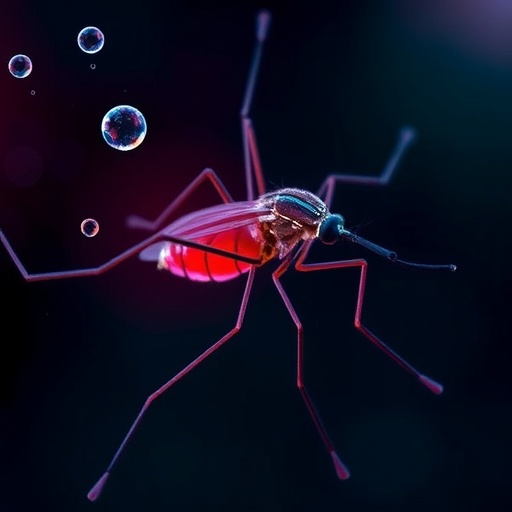UCPH Researchers have discovered that primitive bacterial parasites weaponize CRISPR to engage in battle against one another

Credit: Rafael Pinilla-Redondo
In recent years, the development of CRISPR technologies and gene-editing scissors in particular have taken the world by storm. Indeed, scientists have learned how to harness these clever natural systems in the biotech and pharmaceutical industries, among other areas.
New research from the University of Copenhagen shows that we are not the first to find a way to exploit the benefits of the CRISPR technique. Apparently, primitive bacterial parasites have been doing so for millions of years.
The researchers studied the least described and most enigmatic of the six CRISPR-Cas systems found in nature — Type IV CRISPR-Cas. Here, they uncovered characteristics that differ entirely from those in other systems.
Redefining CRISPR
“Until recently, CRISPR-Cas was believed to be a defense system used by bacteria to protect themselves against invading parasites such as viruses, much like our very own immune system protects us. However, it appears that CRISPR is a tool that can be used for different purposes by diverse biological entities,” according to 28-year-old Rafael Pinilla-Redondo, a PhD at UCPH’s Department of Biology who led the research.
One of these biological entities are plasmids – small DNA molecules that often behave like parasites and, like viruses, require a host bacterium to survive.
“Here we found evidence that certain plasmids use type IV CRISPR-Cas systems to fight other plasmids competing over the same bacterial host. This is remarkable because, in doing so, plasmids have managed to turn the system around. Instead of protecting bacteria from their parasites, CRISPR is exploited to perform another task,” says Pinilla-Redondo, adding:
“This is similar to how some birds compete for the best nesting site in a tree, or how hermit crabs fight for ownership of a shell.”
“A humbling realization”
The discovery challenges the notion that CRISPR-Cas systems have only one purpose in nature, that is, acting as immune systems in bacteria. According to Rafael Pinilla-Redondo, the discovery gives some additional perspective:
“We humans have only recently begun to exploit nature’s CRISPR-Cas systems, but as it turns out, we are not the first. These ‘primitive parasites’ have been using them for millions of years, long before humans. It is quite a humbling realization”
What can we use it for?
The researchers speculate that these systems could be used to combat one of the greatest threats to humanity: multi-drug resistant bacteria. Hundreds of thousands of people die from MDR bacteria every year.
Bacteria become resistant to antibiotics by acquiring genes that make them resistant to antibiotic treatment. Very frequently, this occurs when plasmids transport antibiotic resistant genes from one bacterium to another.
“As this system appears to have evolved to specifically attack plasmids, it is plausible that we could repurpose it to fight plasmids carrying antibiotic resistant genes. This could be achieved because it is possible to program CRISPR to target what one wants” says Pinilla-Redondo.
###
FACTS:
- In nature, CRISPR-Cas are adaptive immune systems used by bacteria to cut the DNA of invading genetic parasites.
- There are six types of naturally occurring CRISPR-Cas systems. The new research shows that Type IV CRISPR-Cas — unlike the other known CRISPR-Cas types — is not found in the genome of bacteria, but in the genetic material of plasmids. Plasmids are parasitic genetic elements that require a host bacterium to survive.
- Among other things, the researchers identified several new subtypes and variants of the Type IV CRISPR-Cas system.
- Several recent articles from other researchers also suggest that different types of so-called mobile genetic elements (a group of genetic entities to which plasmids belong) use CRISPR-Cas components to perform tasks other than protecting bacteria from viruses.
- The research article is published in the scientific journal Nucleic Acids Research.
- The study was conducted by: Rafael Pinilla-Redondo, David Mayo-Muñoz, Jacob Russel, Roger A. Garrett and Søren J. Sørensen from the Department of Biology at the University of Copenhagen; Lennart Randau from Philipps-Universität Marburg, Germany, and Shiraz A. Shah from the Danish Children’s Asthma Center at Herlev and Gentofte Hospital, University of Copenhagen. The research is supported by Independent Research Fund Denmark; Novo Nordisk Foundation’s Tandem programme; Lundbeck Foundation; Deutsche Forschungsgemeinschaft; the Capital Region of Denmark and the Novo Nordisk Foundation’s “Basic Bioscience programme”.
Media Contact
Rafael Pinilla-Redondo
[email protected]
45-61-72-99-69
Original Source
https:/
Related Journal Article
http://dx.





